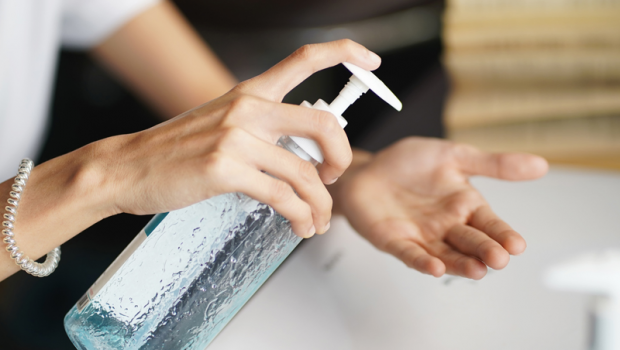Research-Proven DIY Sanitizers That Work
When we’re out and about, if we can’t use a sink and soap to ward off the COVID-19 coronavirus, a hand sanitizer can work, advises the U.S. Centers for Disease Control and Prevention (CDC) —as long as it’s 60 percent alcohol. But with many store shelves empty and some sanitizers selling for up to $150 online and commercial disinfectants in short supply, it’s time to turn to an easy, cheap and environmentally friendly solution—making a batch at home.
The most basic formula, and the one that’s most study-proven, is to mix in a bowl a ratio of two parts alcohol, which wards off germs, to one part aloe vera gel or liquid, which binds the alcohol and protects hands. The alcohol most recommended is 99 percent isopropyl alcohol, a disinfectant found at pharmacies and grocery stores that is typically used to clean surface wounds and take off nail polish. If 99 percent isopropyl (rubbing alcohol) can’t be found, 91 percent or 70 percent isopropyl can also work. Another option is 180-proof liquor, available in high-alcohol-content vodka and rum.
The numbers are important: Most often liquor is 80 proof—or 40 percent alcohol—which doesn’t work. Aloe gel can be found in natural-food stores. After mixing the alcohol and aloe, decant them into a small spray bottle.
To give the sanitizer fragrance and added punch, add a few drops of essential oils. According to Medical News Today, top antiviral essential oils include bergamot, eucalyptus, red thyme, cinnamon leaf, tea tree oil and lemon balm. If there’s the risk of making contact with a doorknob, cup or toilet seat used by someone infected with the virus, the latest study from Infection Prevention in Practice reports that based on experience with previous coronaviruses like SARS and MERS, some disinfectant agents effectively reduce the infection potential within one minute, including a solution of one part chlorine bleach to 50 parts water. Rubbing alcohol or hydrogen peroxide can also rid surfaces of viruses, say researchers.
When it comes to keeping hands virus-free, research suggests that when possible, washing hands under running water—even without soap— is a superior method. In a study published in September in the journal mSphere, researchers found that hand-washing removed the flu virus from hands more quickly and more effectively than using a dab of alcohol-based hand sanitizer.
Photo: kasarp studio/Shutterstock.com





























